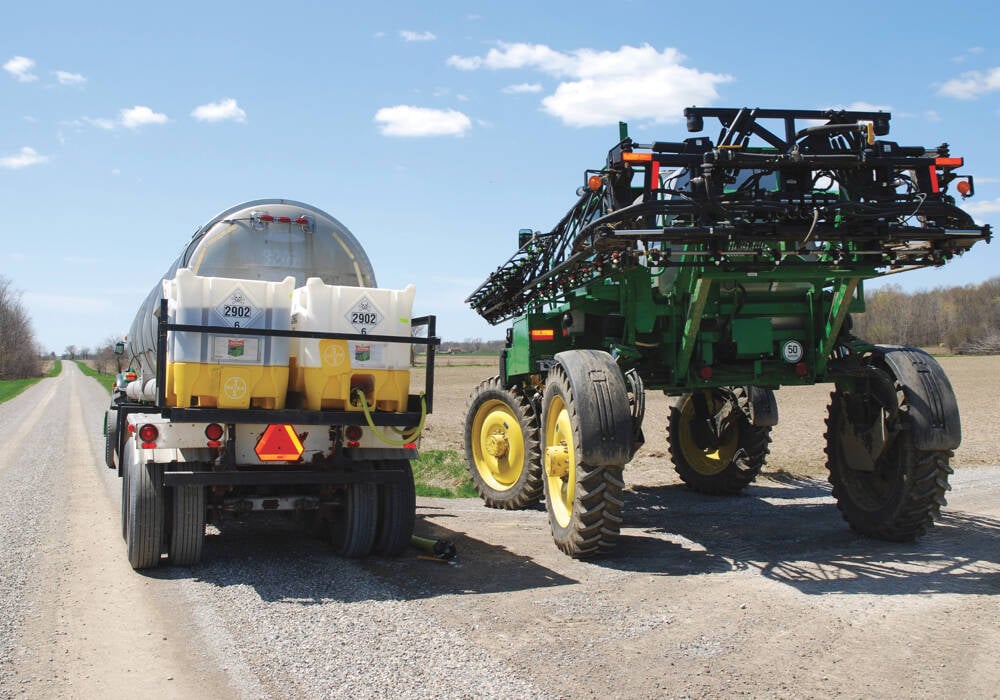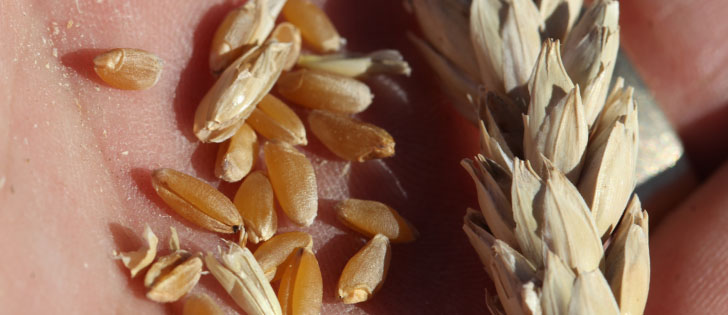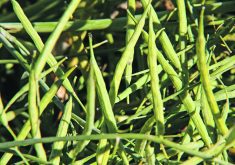Newell County, Alta. – A large canola crop flourishes where the club-root resistant variety is planted. Where it isn’t, there are only weeds.
Alberta plant pathologist Ron Howard directed a one-acre trial of clubroot resistant canola and several other experiments in a southern Alberta field known to be infected with the fungal disease.
“By mid-August, most of the non-resistant plants out here were dead. Many didn’t make it that far,” said the researcher.
Clubroot, first found in Western Canada near Edmonton, made its debut in southern Alberta two years ago.
Read Also

Warding off dicamba spray drift
When it comes to farm weed control, some spraying experts say dicamba’s drift risk isn’t worth it, others say it’s a matter of proper management, smart farmer decisions and chemical product choice.
This season, the province used a one-acre parcel of the infected land, rented by DuPont’s Pioneer Hi-bred, to give farmers and agrologists a first-hand view of what the disease looks like and the effect of resistant genetics on canola production.
The field between Brooks and Bassano killed any non-resistant canola and mustard crop planted this year. Throughout the season, researchers repeatedly replanted to illustrate what the disease looks like, but within a month of planting, most crop brassicas were near death.
“The (Pioneer Hi-bred) 45H29 (clubroot resistant) canola is a good looking crop. Clubroot kills H26 and Pennant mustard pretty easily,” Howard said.
Other research at the site is testing whether pea crops that are swathed and then receive a heavy rain will carry with them clubroot spores and how harvest strategies affect this transfer of infective material.
Another examines whether potato dirt tag is a carrier and what effect potato piece seed treatments have on clubroot.
Researchers are also questioning why camelina doesn’t appear to suffer yield damage despite having clubroot in its tissues.
“Camelina’s roots have the nodules, but it seems to go on without much complaint,” said Howard.
“This spot (of land) is invaluable in providing information to farmers and agronomists. And it may lead to more knowledge about how to manage this disease.
“I’m hoping we can repeat the project here again in 2010.














